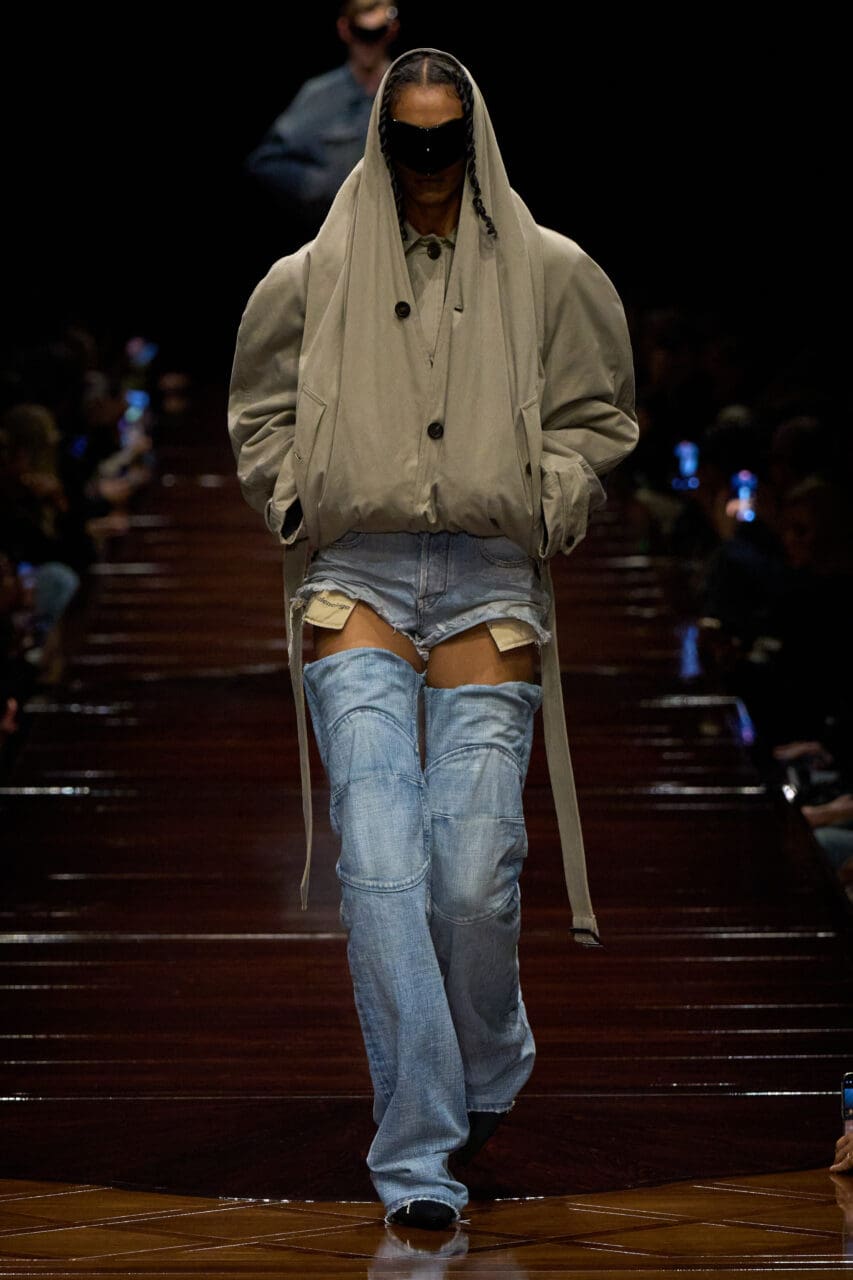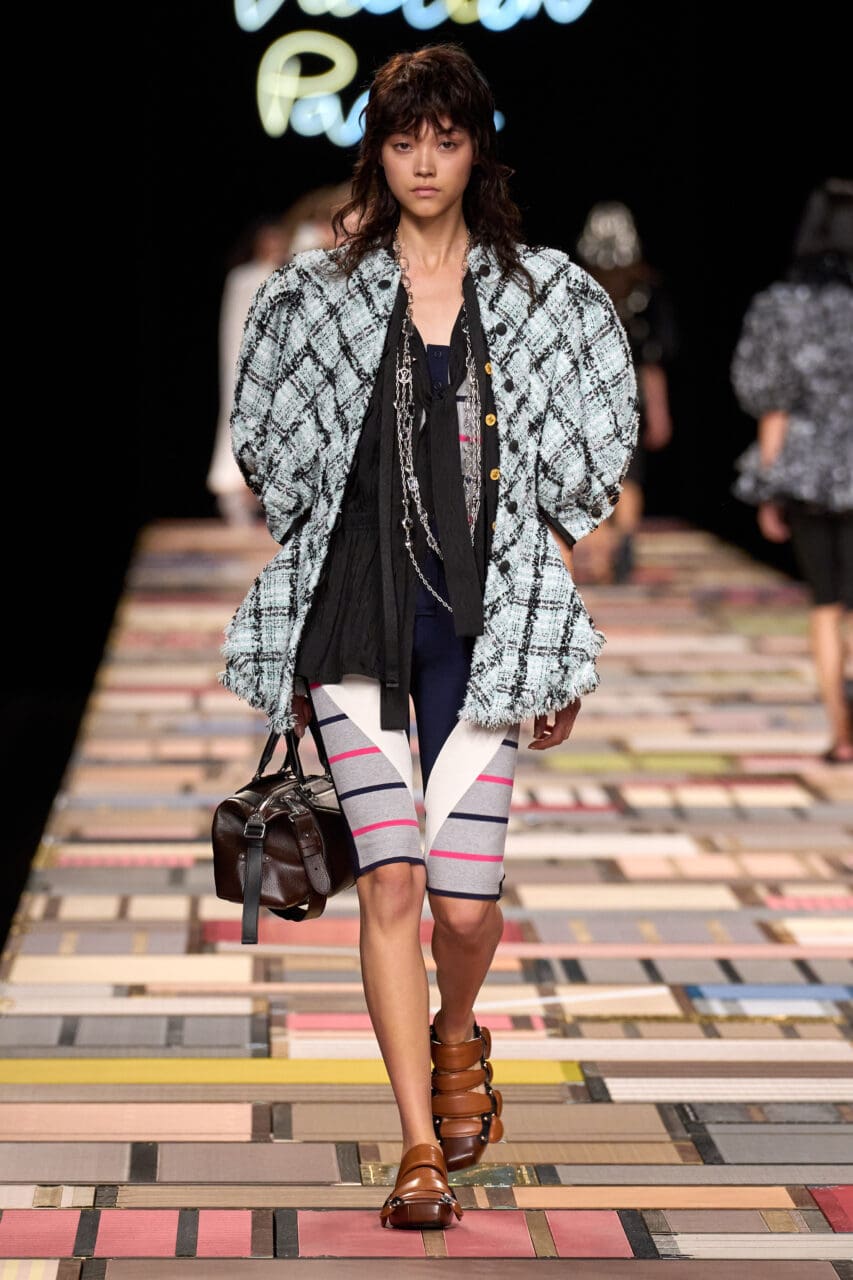Fashion and feminism, the past and the present: Maria Grazia Chiuri’s mission—as we’ve seen from the get-go—is infusing contemporary relevance into Christian Dior’s wardrobe. She’s been saying this since the very beginning of her tenure. Scroll back on Vogue Runway to the quote she gave at her first show on October 1, 2016: “The message, really, is that there is not one type of woman.”
She’s persisted in pursuing that anti-stereotyping principle even more strongly. In this collection there were multiple threads and subtexts both woven together and physically unraveling in the clothes, and a blindingly obvious feminist art statement on the walls. In a post-Barbie world, the irony of the neon pink and yellow highlighting and rebutting sexist advertising (by the Italian artist Elena Bellantoni) wouldn’t be lost on a young audience. Nor would the contrasting darkness—a bit furious, a chic variety of Parisian neo-grunge really—that came out on the runway.
Photos of women rebels and powerful outsiders crowded Chiuri’s moodboard: Ingrid Bergman as Joan of Arc, Maria Callas as Medea, Simone Signoret appearing in a film adaptation of Arthur Miller’s The Crucible (about the Salem witch trials). There was something a bit witchy in the wispy, cobwebby knitted lace dresses and, if you knew the references, something singed about the edges of the denim, plus apparently flame-marked boots.
“But really, I want to break this thing that collections have to be about one reference,” said Chiuri with a sigh during in a preview. In fact, her subject is a complex response to what’s going on today, and how fashion can adequately meet it. She said she recognized some parallels between Bellantoni’s subversion of the alienating language of advertising and her own desire to make Dior’s high fashion relatable. “I think that in fashion we also we have this risk—that we give references that people think they can’t attain personally. So I really want to create a wardrobe where there is just a little bit of evidence that you can personalize your style.”
The lodestar of the many successors who have worked for Dior—and perhaps the bane of their lives—is the Bar jacket, and the corseted constructs of the ’50s haute couture with which he changed fashion. But Chiuri has found her peace with it. One thing that started her off this season was the asymmetric, off-one-shoulder neckline swoop of a black 1948 dress named “Abandon.” It cued her work on white one-sleeved shirts, shirts styled under pinafore dresses, and suchlike. Where a Bar jacket appeared this season, it was eased at the waist, and frayed at the hem. The conventionality of the pleated New Look circle skirt was disrupted with leg-flashing slits and blurry black, white and grey-ish prints.
Still, Chiuri’s deeper connection with Dior, the man, is much more on the level of his psychological motivations and responses to the times he was living in. His escape into tarot readings with a Madame Delahaye (who became all the rage among fashion editors) is something Chiuri can relate to. “In hard times, war, you look outside yourself for hope,” she commented. More than that, in his era Christian Dior was responsible for raising the morale of women in a very hard time.
Chiuri is becoming more conscious of wanting to serve today’s women in that way with every season. After all, she saw it coming. Perhaps at the beginning her “We should all be feminists” T-shirts (quoting Chimamanda Ngozi Adichie) might have seemed like a statement of the very obvious. But as time has passed—only seven, short, horrific years—women’s rights and freedoms have being horrifically rolled back, or have been violently under attack, all over the world.
Fashion is only fashion, but at its best, its commentary on the times is worth recording.
Editor
Sarah MowerCredit
Lead image: Daniele Oberrauch / Gorunway.com





